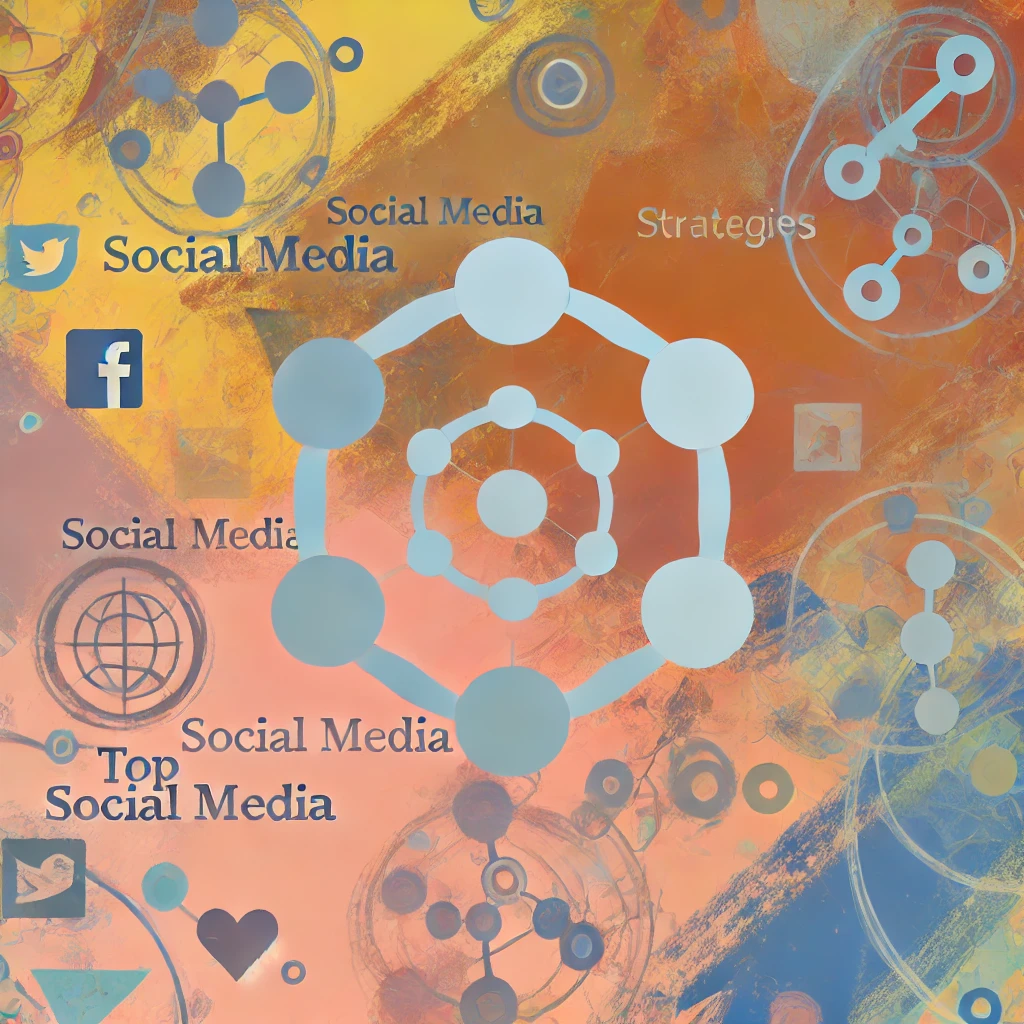
Building Communities: Engaging Online for Drug Rehabilitation Facilities on Social Media
Table of Contents
social media strategies for rehab
Understanding the Importance of Social Media in Drug Rehab Marketing
Why Social Media is Important for Rehab Facilities
Social media is a powerful tool for drug rehab facilities. It helps connect with people in need and build trust. Here’s why it’s important:
- Wide Reach: Social media platforms like Facebook, Instagram, and Twitter have billions of users. This means your rehab facility can reach a large audience, including those who need help and their families.
- Cost-Effective: Advertising on social media is often cheaper than traditional methods. You can target specific groups with tailored messages without breaking the bank.
- Engagement: Social media allows direct interaction. You can answer questions, share success stories, and provide support. This builds a sense of community and trust.
- Awareness: Regular posts and updates keep your audience informed about your services, events, and the latest in addiction recovery.
Benefits of a Strong Online Community for Rehab Centers
Building a strong online community has several benefits for rehab centers:
- Support Network: Online communities provide a platform for people to share their experiences and support each other. This can be very motivating for those in recovery.
- Increased Trust: When people see real stories and interactions, they are more likely to trust your facility. Trust is crucial for people seeking rehab services.
- Feedback and Improvement: Engaging with your online community gives you direct feedback. You can learn what works, what doesn’t, and how to improve your services.
- Visibility and Reach: A strong online presence increases your visibility. More people will learn about your facility, leading to more inquiries and admissions.
Using social media effectively can transform how rehab facilities engage with their audience. It's not just about marketing; it’s about building relationships and providing ongoing support.
Effective Social Media Strategies for Drug Rehab Facilities
Social media can be a game-changer for drug rehab facilities. It helps in reaching a broader audience and engaging effectively. Let’s dive into the strategies that can make a significant impact.
Identifying Your Target Audience
Knowing your audience is the first step to successful social media engagement. Here's how to identify your target audience:
- Demographics: Understand the age, gender, and location of your audience. Most social media platforms provide insights into who is engaging with your content.
- Interests and Behaviors: Look at what your audience is interested in and how they behave online. This includes the types of content they engage with and the times they are most active.
- Needs and Challenges: Identify the specific needs and challenges your audience faces regarding addiction and recovery. This helps in creating content that resonates with them.
By knowing your audience, you can tailor your messages to be more impactful and relevant.
Creating Engaging and Supportive Content
Content is the heart of social media engagement. Here are some tips for creating content that engages and supports your audience:
- Educational Posts: Share information about addiction, recovery, and mental health. This helps in building trust and providing value to your audience.
- Success Stories: Highlight stories of individuals who have successfully recovered. These stories can be very motivating and encourage others to seek help.
- Interactive Content: Create polls, quizzes, and Q&A sessions. Interactive content increases engagement and makes your audience feel more connected.
- Visual Content: Use images, infographics, and videos. Visual content is more engaging and can convey messages more effectively.
- Regular Updates: Keep your audience informed about your services, events, and any new developments in the field of addiction recovery.
Engaging and supportive content can build a strong online community, making people feel supported and connected.
Utilizing Various Social Media Platforms
Different social media platforms offer different opportunities for engagement. Here’s how to utilize various platforms effectively:
- Facebook: Great for building communities and sharing detailed content. Use Facebook groups to create support networks and share regular updates.
- Instagram: Perfect for visual content. Share images, infographics, and short videos. Use Instagram Stories to share daily updates and behind-the-scenes content.
- Twitter: Ideal for quick updates and real-time engagement. Use Twitter to share news, updates, and engage in conversations with your audience.
- LinkedIn: Good for professional engagement. Share articles, updates, and connect with other professionals in the field.
- YouTube: Excellent for long-form video content. Share success stories, educational videos, and webinars.
Using a mix of platforms allows you to reach different segments of your audience and engage them in various ways. In summary, effective social media strategies involve knowing your audience, creating engaging content, and using multiple platforms to reach and interact with them. These strategies can help drug rehab facilities build a supportive online community and increase their reach.

Tips for Building a Supportive Online Community
Creating a supportive online community for drug rehabilitation facilities is vital. It can help patients feel connected and supported. Let's look at some effective ways to build this community.
Encouraging Patient and Alumni Interaction
Interaction between current patients and alumni is essential. It fosters a sense of belonging and support. Here’s how to encourage this interaction:
- Create Private Groups: Set up private groups on Facebook or other platforms where current patients and alumni can interact. These groups provide a safe space for sharing experiences and offering support.
- Alumni Testimonials: Encourage alumni to share their stories and experiences. These testimonials can inspire and motivate current patients.
- Peer Mentorship Programs: Establish programs where alumni mentor current patients. This can create strong bonds and provide valuable support during recovery.
By encouraging patient and alumni interaction, you can create a strong support network that benefits everyone involved.
Hosting Live Sessions and Q&A
Live sessions and Q&A can significantly boost engagement and provide real-time support. Here’s how to make the most of these tools:
- Expert Sessions: Host live sessions with addiction recovery experts. They can share valuable insights, answer questions, and provide support.
- Interactive Q&A: Hold Q&A sessions where patients and their families can ask questions and get immediate answers. This helps in addressing concerns and providing clarity.
- Regular Scheduling: Schedule these sessions regularly. Consistency helps build trust and keeps your audience engaged.
Live sessions and Q&A provide a direct way to engage with your audience, making them feel heard and supported.
Sharing Success Stories and Testimonials
Success stories and testimonials are powerful tools. They show real-life examples of recovery and success. Here’s how to effectively share these stories:
- Video Testimonials: Create videos of alumni sharing their recovery stories. Videos are engaging and can convey emotions better than text.
- Written Stories: Share written testimonials on your website and social media. Highlight different stages of recovery to show the progress and challenges.
- Celebrate Milestones: Celebrate milestones like sobriety anniversaries. Recognize and share these achievements with your community.
By sharing success stories and testimonials, you can inspire and motivate others on their recovery journey.
In summary, building a supportive online community involves encouraging patient and alumni interaction, hosting live sessions and Q&A, and sharing success stories and testimonials. These strategies can help create a strong, supportive network for drug rehabilitation facilities.

Best Practices for Social Media Engagement
Engaging effectively on social media is key for drug rehabilitation facilities. It helps build trust, provide support, and reach more people in need. Let’s explore some best practices to enhance social media engagement.
Consistent Posting and Interaction
Consistency is vital in social media marketing. Regular posts keep your audience engaged and informed. Here’s how to maintain consistency:
- Content Calendar: Create a content calendar to plan your posts. This helps in maintaining a steady flow of content and ensures you cover all necessary topics.
- Variety of Content: Post different types of content such as articles, videos, infographics, and patient stories. Variety keeps your audience interested and engaged.
- Regular Updates: Keep your audience updated about events, new programs, and other important information. Regular updates help in keeping your audience informed and engaged.
- Engage Actively: Respond to comments and messages promptly. Active engagement shows that you value your audience and are there to support them.
By posting consistently and interacting regularly, you can build a strong and engaged online community.
Responding to Comments and Messages
Responding to comments and messages is crucial for building trust and engagement. Here’s how to do it effectively:
- Timely Responses: Aim to respond to comments and messages as quickly as possible. Timely responses show that you are attentive and care about your audience.
- Personalized Replies: Personalize your responses to make your audience feel valued. Use their names and address their specific concerns or questions.
- Positive Interaction: Always maintain a positive and supportive tone in your responses. Positive interactions help in building a supportive community.
- Address Negative Feedback: Handle negative comments professionally. Address the concerns raised and provide solutions or support where possible.
Effective responses to comments and messages help in building a supportive and engaged community.
Monitoring and Measuring Engagement
Monitoring and measuring engagement is essential to understand what works and what doesn’t. Here’s how to do it:
- Analytics Tools: Use social media analytics tools to track engagement metrics such as likes, shares, comments, and reach. These tools provide valuable insights into your audience’s behavior and preferences.
- Track Performance: Monitor the performance of different types of content. Identify which posts receive the most engagement and try to replicate their success.
- Feedback Analysis: Analyze the feedback received through comments and messages. This helps in understanding your audience’s needs and improving your content accordingly.
- Adjust Strategies: Based on the insights gathered, adjust your social media strategies. Focus more on what works and refine what doesn’t.
By monitoring and measuring engagement, you can continually improve your social media strategies and build a stronger online presence.

Case Studies of Successful Social Media Campaigns in Drug Rehab
Learning from successful social media campaigns can provide valuable insights for drug rehabilitation facilities. These case studies highlight effective strategies and lessons learned that can be applied to your own social media marketing efforts.
Highlighting Successful Campaigns
Case Study 1: Recovery Center A
- Campaign Overview: Recovery Center A launched a campaign focused on sharing success stories from alumni. They used videos, written testimonials, and live sessions where alumni shared their experiences.
- Strategies Used:
- Video Testimonials: Engaging video content that showcased personal recovery journeys.
- Live Q&A Sessions: Interactive sessions where alumni answered questions from the audience.
- Consistent Posting: Regular updates and posts to keep the audience engaged.
- Results:
- Increased Engagement: The campaign saw a 30% increase in social media engagement.
- Higher Inquiries: There was a noticeable rise in inquiries about the facility’s programs.
Case Study 2: Wellness Rehab B
- Campaign Overview: Wellness Rehab B focused on educational content about addiction and recovery. They used infographics, articles, and expert interviews to provide valuable information.
- Strategies Used:
- Infographics: Easy-to-understand graphics that explained complex topics.
- Expert Interviews: Interviews with addiction specialists shared on social media.
- Educational Articles: In-depth articles posted regularly to inform and engage the audience.
- Results:
- Increased Followers: The facility gained a significant number of new followers.
- Improved Trust: Audience trust increased due to the valuable content provided.
Case Study 3: Hope Rehab C
- Campaign Overview: Hope Rehab C created a campaign centered on community building. They used social media groups, support forums, and regular community events.
- Strategies Used:
- Private Groups: Exclusive groups for current patients and alumni to interact and support each other.
- Community Events: Regular online events like virtual meetups and support sessions.
- Support Forums: Online forums where users could share experiences and seek advice.
- Results:
- Stronger Community: A stronger sense of community was built among patients and alumni.
- Positive Feedback: The campaign received positive feedback for its supportive nature.
Lessons Learned from Effective Strategies
1. Personal Stories Resonate
- Personal stories and testimonials have a significant impact. They provide hope and inspiration, making the audience feel connected and supported.
2. Educational Content Builds Trust
- Providing valuable educational content establishes your facility as a trusted source of information. This can increase engagement and attract more followers.
3. Consistency is Key
- Regular posting and interaction are essential for keeping the audience engaged. Consistency helps build a loyal following and maintains interest.
4. Community Building is Crucial
- Creating a sense of community through groups, forums, and events fosters a supportive environment. This can significantly enhance the recovery journey for many.
5. Interactive Content Boosts Engagement
- Interactive content like live sessions, Q&A, and polls can significantly boost engagement. It makes the audience feel involved and valued.

Conclusion
Recap of Key Points
Building a strong online community for drug rehabilitation facilities through social media is crucial for effective engagement and support. Here’s a recap of the main points covered:
- Identifying Your Target Audience: Knowing who you are trying to reach helps tailor your content and engagement strategies to meet their specific needs.
- Creating Engaging and Supportive Content: Content should be varied and consistent, including educational posts, success stories, interactive content, and regular updates to keep the audience engaged.
- Utilizing Various Social Media Platforms: Different platforms offer unique opportunities. Use a mix of platforms like Facebook, Instagram, Twitter, LinkedIn, and YouTube to reach and interact with different segments of your audience.
- Encouraging Patient and Alumni Interaction: Creating private groups, peer mentorship programs, and sharing alumni testimonials can foster a strong support network.
- Hosting Live Sessions and Q&A: Live interactions with experts and regular Q&A sessions provide real-time support and engagement.
- Sharing Success Stories and Testimonials: Highlighting personal recovery journeys can inspire and motivate others.
- Consistent Posting and Interaction: Maintaining a regular posting schedule and actively engaging with your audience builds trust and loyalty.
- Responding to Comments and Messages: Timely and personalized responses show that you value your audience’s input and are there to support them.
- Monitoring and Measuring Engagement: Using analytics tools to track engagement helps refine strategies and improve content based on what resonates with your audience.
- Case Studies of Successful Campaigns: Learning from successful social media campaigns provides insights into effective strategies and best practices.
Encouraging Continuous Improvement and Adaptation
Social media is ever-changing, and what works today might not work tomorrow. It’s essential to stay flexible and continuously improve your strategies:
- Focus on Value: Always aim to provide value to your audience. Whether it’s through educational content, support, or engagement, ensuring that your audience benefits from your social media presence will help build a loyal community.
- Stay Updated: Keep up with the latest trends and changes in social media algorithms. Platforms frequently update their features and policies, and staying informed will help you adapt quickly.
- Experiment and Innovate: Don’t be afraid to try new content types, posting times, or engagement strategies. Testing different approaches can reveal what works best for your audience.
- Gather Feedback: Regularly seek feedback from your audience. Conduct surveys, read comments, and engage in conversations to understand their needs better and improve your services.
- Analyze and Adjust: Use data and analytics to evaluate the performance of your social media efforts. Adjust your strategies based on what the data tells you to ensure continuous growth and improvement.
Questions You Might Ponder
How can social media help drug rehabilitation facilities reach a broader audience?
Social media platforms like Facebook, Instagram, and Twitter have billions of users, providing drug rehabilitation facilities a vast audience. By creating targeted advertisements and tailored messages, these facilities can effectively reach individuals seeking help and their families. The cost-effectiveness of social media marketing allows for extensive reach without significant financial investment, making it a practical tool for spreading awareness and engaging with those in need of support.
What are the benefits of building a strong online community for rehab centers?
A strong online community offers multiple benefits for rehab centers, including providing a support network where individuals can share experiences and offer encouragement. This fosters a sense of belonging and motivation for those in recovery. Additionally, a vibrant online community increases trust and visibility, leading to more inquiries and admissions. Continuous engagement also allows facilities to receive direct feedback, helping to improve services and better meet the needs of their audience.
Why is consistent posting and interaction important in social media engagement for rehab facilities?
Consistent posting and interaction are essential because they keep the audience engaged and informed about the facility's services, events, and updates in addiction recovery. Regular posts ensure that the facility remains visible in users' feeds, fostering a sense of reliability and trust. Active engagement, such as responding promptly to comments and messages, shows the audience that their input is valued and that the facility is committed to supporting them.
How can drug rehabilitation facilities effectively utilize various social media platforms?
Different social media platforms cater to various aspects of engagement. Facebook is ideal for building communities and sharing detailed content, while Instagram excels in visual storytelling with images and short videos. Twitter is useful for quick updates and real-time interaction, LinkedIn is suited for professional engagement, and YouTube is perfect for long-form video content like success stories and educational videos. Using a mix of these platforms allows facilities to reach and engage different audience segments effectively.
What strategies can rehab facilities use to encourage patient and alumni interaction?
To foster patient and alumni interaction, rehab facilities can create private groups on platforms like Facebook where current patients and alumni can share experiences and offer support. Encouraging alumni to share their recovery stories through testimonials can inspire and motivate current patients. Establishing peer mentorship programs where alumni mentor current patients can create strong bonds and provide valuable support during the recovery process, enhancing the overall sense of community.
How can monitoring and measuring engagement improve social media strategies for rehab facilities?
Monitoring and measuring engagement using social media analytics tools provide valuable insights into audience behavior and preferences. By tracking metrics such as likes, shares, comments, and reach, facilities can identify which content types resonate most with their audience. Analyzing feedback from comments and messages helps understand audience needs and refine content strategies. Continuous adjustment based on data ensures that the social media efforts remain effective and relevant, leading to improved engagement and community building.
What lessons can be learned from successful social media campaigns in drug rehab?
Successful social media campaigns in drug rehab highlight several key lessons, such as the power of personal stories in resonating with the audience and building emotional connections. Educational content builds trust and positions the facility as a reliable source of information. Consistency in posting and interaction maintains audience engagement and loyalty. Community-building efforts through groups and events foster a supportive environment, and interactive content significantly boosts engagement by making the audience feel involved and valued.
Would you like to explore how these strategies can specifically benefit your facility? Let's discuss how to implement them effectively.